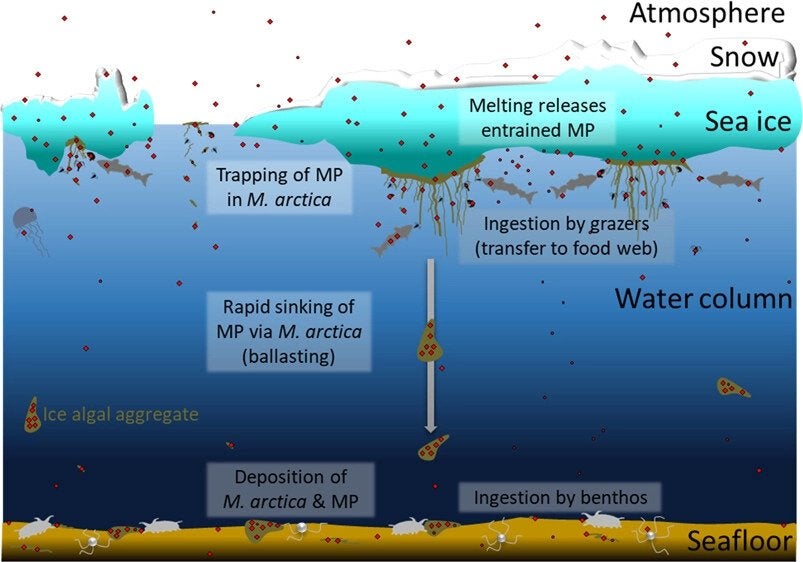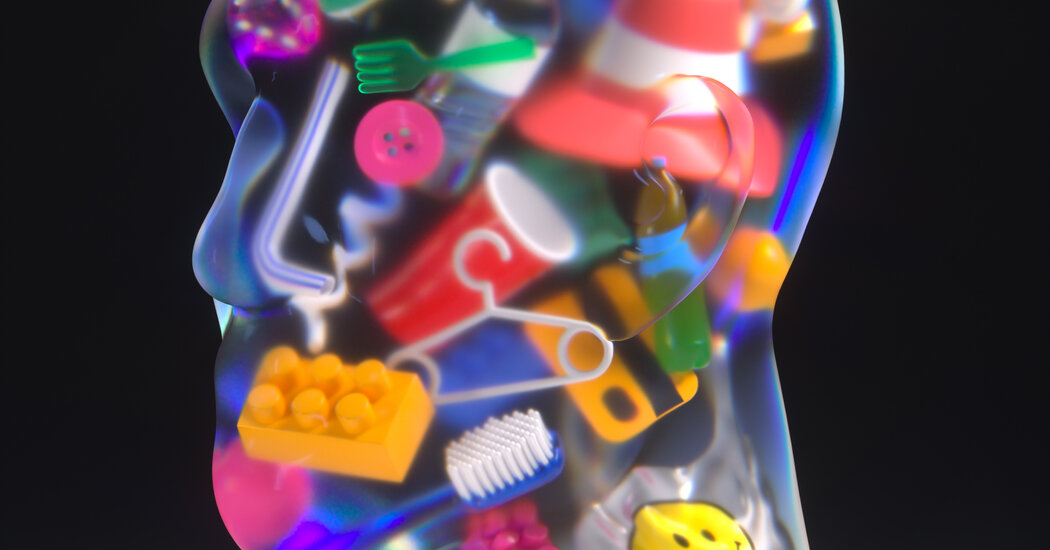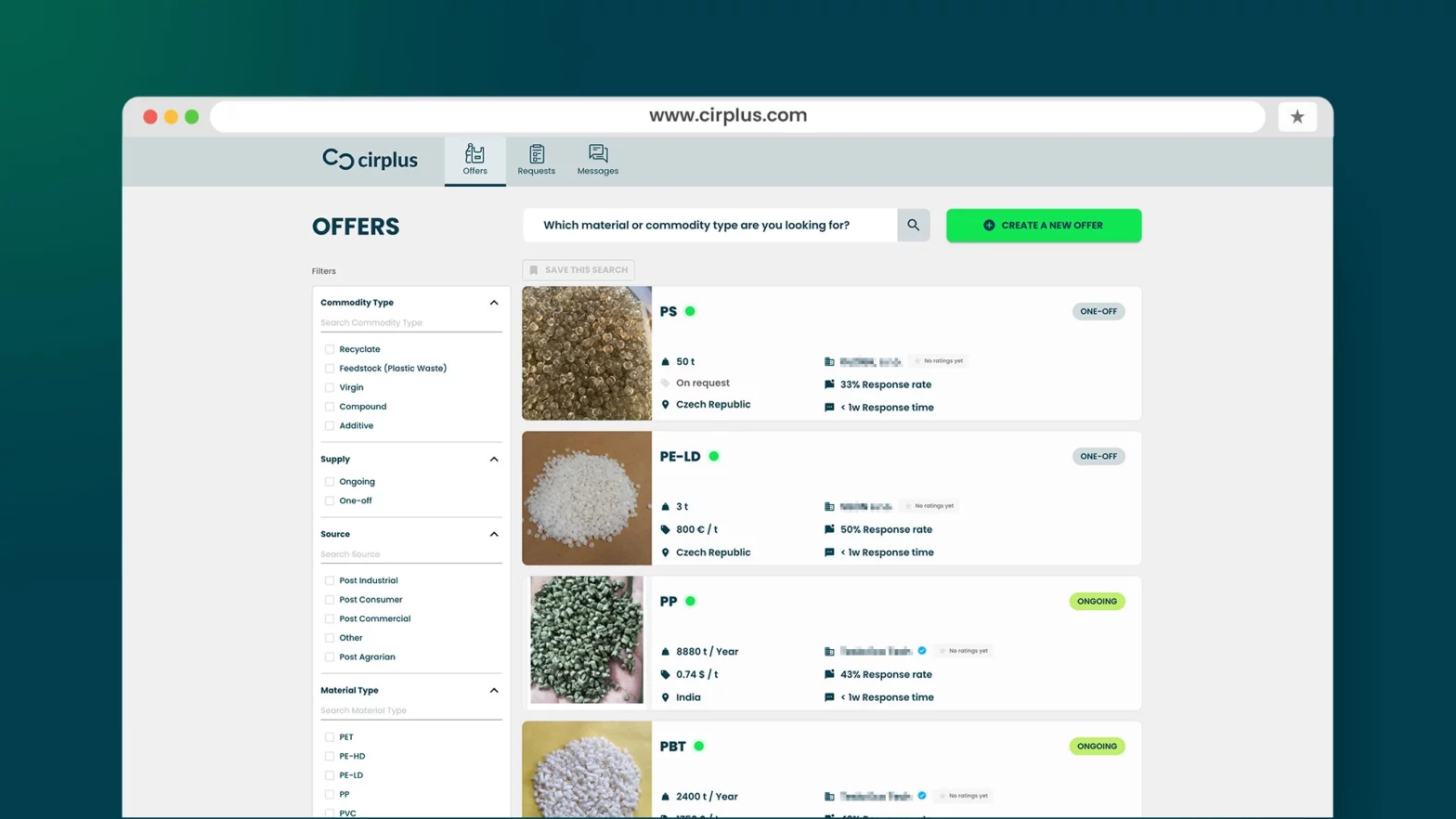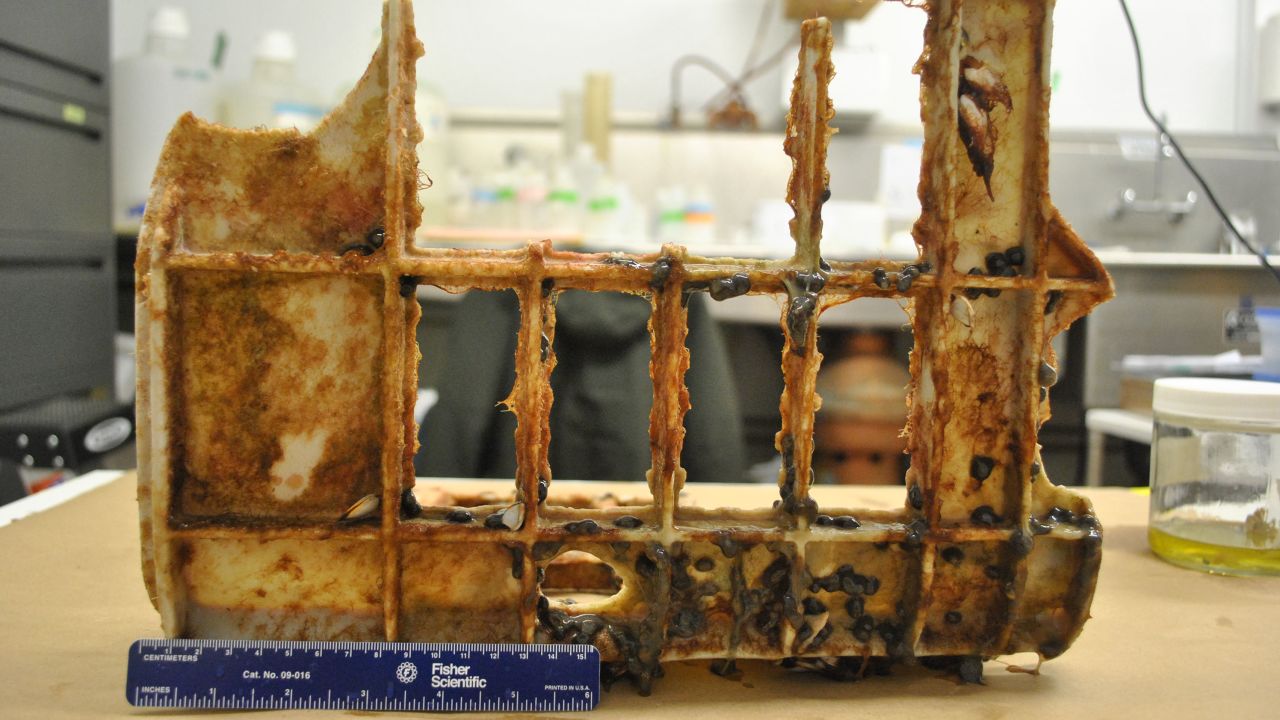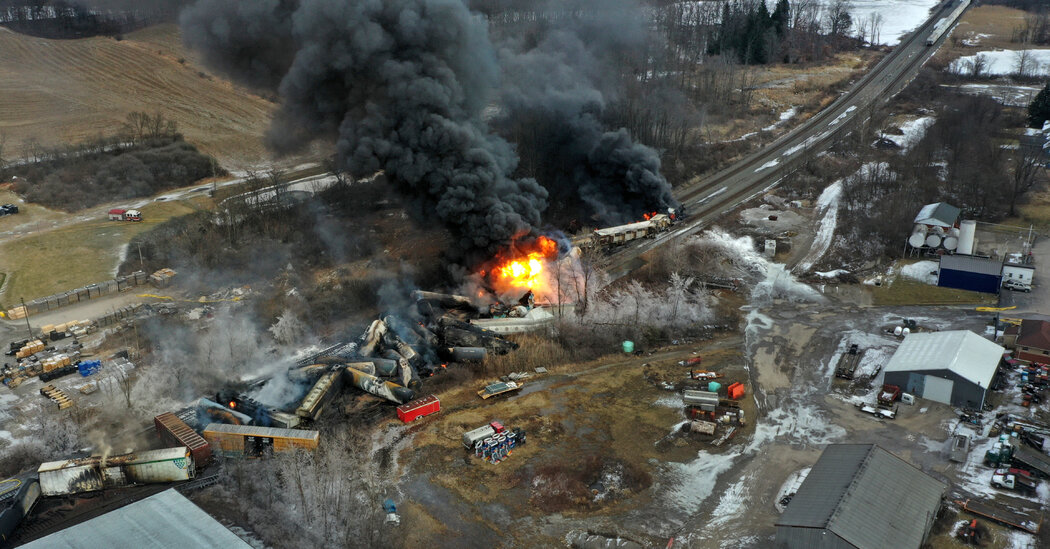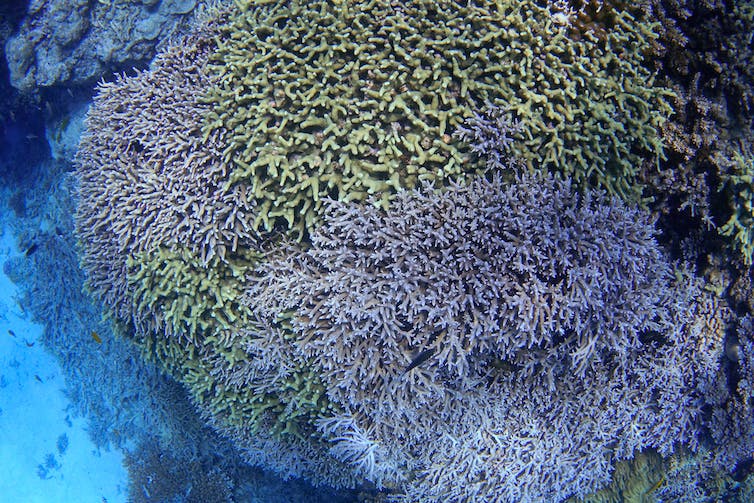Presented by
.cms-textAlign-left{text-align:left;}.cms-textAlign-center{text-align:center;}.cms-textAlign-right{text-align:right;}
THE BIG IDEA
Does this count as recycling? | Seth Wenig/AP Photo
GUIDING LIGHT — Companies are talking the talk on sustainability. The Federal Trade Commission is gearing up to make sure they’re walking the walk, Jordan reports.As demand for sustainable products has skyrocketed, so have concerns about greenwashing. Public comments were due yesterday on the FTC’s first update in 11 years of its “Green Guides,” which are essentially advice for how companies can make environmental marketing claims.The nearly 60,000 comments shed light on what companies, industry trade groups and environmentalists are fighting over:— Recycling claims. Current FTC guidelines say companies should qualify claims of “recyclability” when products aren’t recyclable in at least 60 percent of their market. The EPA wrote that the bar “should be much higher,” while environmental groups want to clarify that at least 60 percent of products need to actually be recycled — not just collected. That coalition also wants to set a higher bar of 75 percent for store drop-off programs.The Plastics Industry Association wants the standards to stay as-is: The FTC “should not further complicate the issue by adding hurdles,” the group wrote. It also wants take-back or drop-off programs to be equally eligible to make unqualified recycling claims.— Corporate net-zero claims. Ceres, a nonprofit focused on corporate sustainability, wants the FTC to give guidance on how companies can use carbon offsets to make claims about their climate commitments and achievements. Sierra Club and a half-dozen other groups want disclosure of specific offsets’ climate benefits.— Chemical recycling. The American Chemistry Council and the Plastics Industry Association want to make it easier to claim that chemical recycling — a set of technologies that involve melting hard-to-recycle plastic down into its components — counts toward companies’ recycled content and recyclability standards. The ACC submitted a new poll showing that nearly 90 percent of consumers believe chemical recycling qualifies as “recycling.” Green groups are pushing back.— Enforcement. Environmental groups want the FTC to initiate a formal rulemaking process to codify the Green Guides (currently, the agency can bring enforcement action via violations of the FTC Act), with an eye toward California’s “truth in labeling” law. EPA seems to be on board, too, but the Plastics Industry Association opposes rulemaking.How much does this all matter? The FTC doesn’t do a ton of enforcement of green marketing claims: It’s taken enforcement action under the Green Guides 36 times since 2013. It hasn’t taken enforcement action based on recycling claims since 2014 — although it does send warning letters, which can nudge companies into compliance.The agency tends to pick big cases that send a signal — like its $5.5 million penalty last year against Walmart and Kohl’s over claims that they marketed rayon textiles as made from eco-friendly bamboo, when in fact converting bamboo into rayon involves toxic chemicals.But officials are signaling willingness to wade into the details on new technologies such as chemical recycling.“Our job is to not say what’s good or bad for society, it is to make sure that people aren’t lying,” James Kohm, associate director of enforcement in the FTC’s Bureau of Consumer Protection, said in an interview. “We wouldn’t necessarily hesitate to get involved in a situation. What we don’t want to do is contradict the EPA, and we’ve been careful in a number of areas to not do that. There are a bunch of trade offs — that you have less trash, but you might have more air pollution, for example. If we had enough information, and we weren’t contradicting the EPA, we would probably give advice.”We could be in this for the long haul: The last time the Green Guides were updated, the process started in 2007 and didn’t end until 2012. There’s an initial public workshop on recycling scheduled next month. A message from American Beverage Association:
.intext-ad__copy-styles0 p {
color:#000000;
margin-top:0;
margin-bottom:1rem;
line-height:1.5;
font-family: Georgia,Times,serif;
}
.intext-ad__copy-styles0 a {
color:#007bc7;
text-decoration:underline;
}
At America’s beverage companies, we are committed to reducing our plastic footprint. That’s why we’re carefully designing our plastic bottles to be 100% recyclable, including the caps. Our goal is for every bottle to become a new one, so they don’t end up in nature. Learn more at EveryBottleBack.org.
Sustainable Finance
VENTURING OUT — Venture capital firms are coming together to set net-zero standards for themselves and their investments.The Venture Climate Alliance launching today has 23 member firms, including Prelude Ventures, Galvanize Climate Solutions, Union Square Ventures and World Fund. They’re committing to reaching net zero emissions within their own operations by 2030 and to align their investment strategies with reaching net zero by 2050.They’ve been working on it for more than a year and have gotten the blessing of the Glasgow Financial Alliance for Net Zero, the UN-affiliated umbrella group aiming to decarbonize the financial sector.VCs say they need their own sector-specific alliance partly because they’re focused on building up companies, which comes with unavoidable short-term emissions.“The question to ask that’s interesting is not, ‘Will your emissions go down from where they are today to tomorrow along a pathway to net zero to 2050?’” said Daniel Firger, managing director of Great Circle Capital Advisors and co-founder/lead adviser of the VCA. “We don’t exist today, and we will hopefully exist tomorrow and sell things to companies and have office space, so the question just philosophically begins from a different premise when you’re coming in thinking about venture investing as a category under net zero.”The group isn’t envisioning excluding firms based on their investment strategies. “There are some oil and gas companies that have made these commitments, and so it really is for every industry, for every company to think about this,” said Alexandra Harbour, a principal at Prelude Ventures and founder and chair of the VCA. “Every industry has the potential to achieve or contribute to impact, and that’s kind of the goal.”
WORKPLACE
New Window
Illinois corporate boards are lagging in diversity. | Courtesy University of Illinois at Urbana-Champaign
SLOW GOING — An Illinois law designed to diversify corporate boards is having mixed results, Shia Kapos reports.The numbers are meh: While women’s representation on corporate boards has reached more than 20 percent on average, they are underrepresented in most companies compared with their workforce, according to numbers compiled as part of compliance with the 2019 law, which requires companies based in the state to list their corporate board makeup based on sexual orientation, race and ethnicity.The state found that Illinois firms are more likely to have zero, one, or two female directors, as compared with S&P 500 firms, which are more likely to have three or more female directors.Non-white minorities are even more underrepresented than women relative to the state’s population. Of the firms reporting, 32 had no Black board members. Fifty-nine reported having zero Asian directors, while 72 reported zero Latino directors.The sponsor of the law, House Speaker Emanuel “Chris” Welch, said he’s optimistic representation will get better. “Corporations want to make improvements,” he said. “We got their attention. I think it will only continue to improve.” A message from American Beverage Association:
YOU TELL US
GAME ON — Welcome to the Long Game, where we tell you about the latest on efforts to shape our future. We deliver data-driven storytelling, compelling interviews with industry and political leaders, and news Tuesday through Friday to keep you in the loop on sustainability.Team Sustainability is editor Greg Mott, deputy editor Debra Kahn and reporters Jordan Wolman and Allison Prang. Reach us all at [email protected], [email protected], [email protected] and [email protected].Want more? Don’t we all. Sign up for the Long Game. Four days a week and still free!
WHAT WE’RE CLICKING
— A U.S. startup is working with a Danish concrete manufacturing giant to develop a new form of cement mix that could dramatically reduce energy use and carbon emissions, according to Bloomberg.— Near-shoring has been viewed as a way to ease supply chain problems, but it comes with its own set of problems, the Wall Street Journal reports.– A Democratic senator is planning to introduce legislation that would protect mining companies’ rights to dump waste on adjoining federal lands. The Associated Press has that story.CORRECTION: An earlier version of this newsletter included an inaccurate list of firms joining the Venture Climate Alliance. A message from American Beverage Association:
.intext-ad__copy-styles2 p {
color:#000000;
margin-top:0;
margin-bottom:1rem;
line-height:1.5;
font-family: Georgia,Times,serif;
}
.intext-ad__copy-styles2 a {
color:#007bc7;
text-decoration:underline;
}
America’s leading beverage companies – The Coca-Cola Company, Keurig Dr Pepper and PepsiCo – are working together to reduce our industry’s plastic footprint through our Every Bottle Back initiative. We’re investing in efforts to get our bottles back so we can remake them into new bottles and use less new plastic. Together, we’re: Designing 100% recyclable plastic bottles – we’re making our bottles from PET that’s strong, lightweight and easy to recycle. Investing in community recycling – we’re marshalling the equivalent of nearly a half-billion dollars with The Recycling Partnership and Closed Loop Partners to support community recycling programs where we can have the greatest impact. Raising awareness – we’re adding on-pack reminders to encourage consumers to recycle our plastic bottles and caps. Our bottles are made to be remade. Please help us get Every Bottle Back.
« View Archives


